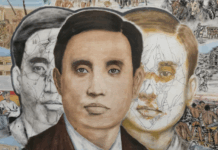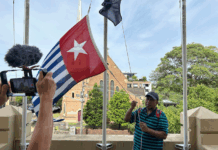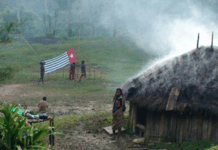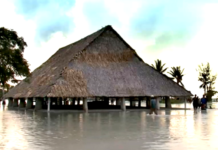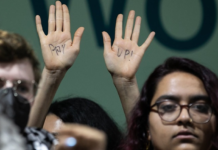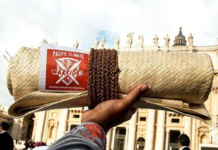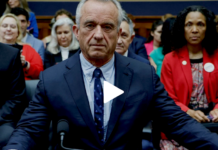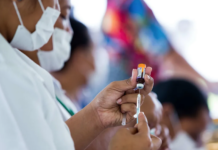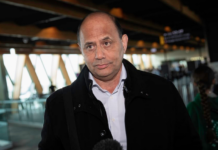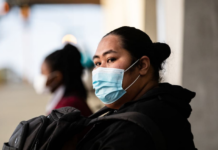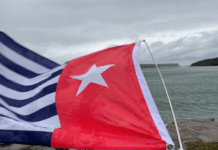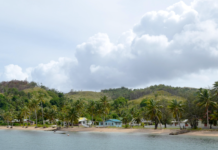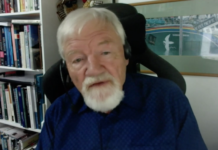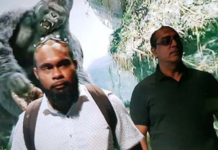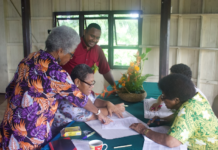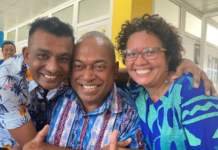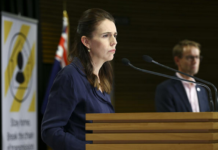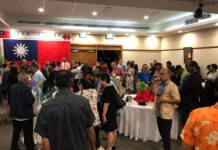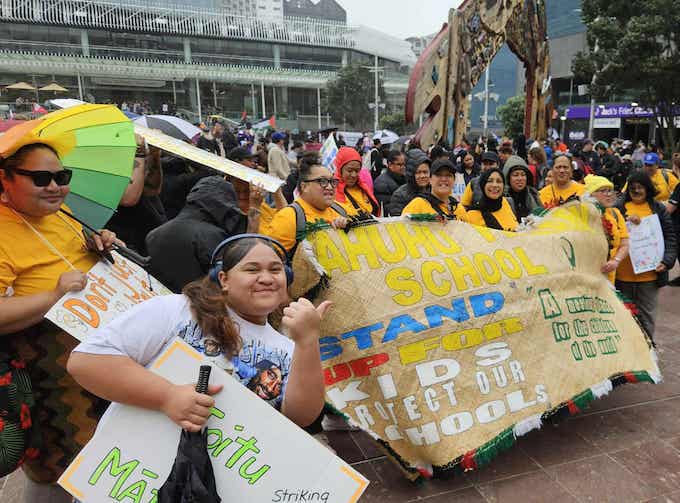
Thousands have marched through major city streets and rallied in small towns across Aotearoa New Zealand as part of today’s “mega strike” of public workers.
More than 100,000 workers from several sectors walked off the job in increasingly bitter disputes over pay and conditions.
It was billed as possibly the country’s biggest labour action in four decades.
- READ MORE: Thousands of nurses, teachers and doctors take part in NZ’s ‘mega strike’
- Gerard Otto’s G News video commentary on the ‘mega strike’
- More photos and speech videos
- Other NZ public service reports
Strike action in Auckland’s Aotea Square. Video: RNZ
Among those on strike were doctors, dentists, nurses, social workers and primary and secondary school teachers.
Several rallies were cancelled by severe weather in the South Island and lower North Island.
Auckland
One of the day’s main rallies got underway shortly after midday with thousands of protesters gathering in Aotea Square for speeches, before marching down Queen Street.
Many carried signs and chanted, cheered and danced as they made their way down.

Green Party co-leader Chlöe Swarbrick said it was embarrassing that the government was labelling the action politically motivated.
“Of course this is political. Politics is about power and it’s about resources and it’s about who gets to make decisions that saturate and shape our daily lives,” she said.
There was a smaller, earlier rally in the morning in Henderson.
Tupe Tai from Western Springs College, who has been teaching for several decades, said the situation had become untenable.
“We’ve got really underpaid and overworked teachers, they need that support.”
She also said teachers needed an environment where they could work on the curriculum, have time to do it, but also have a life.

Hamilton
The crowd swelled to an estimated 10,000 in Hamilton’s rally.
Kimberly Jackson and her daughter were at the rally on behalf of her husband, a senior doctor who had to be at the hospital working as part of lifesaving measures.
“For us it is personal, but it’s also about this country that I love, that I’ve grown up in, and I can see terrible things happening in this country and I feel really passionate about public health care,” she said.
Jackson said she had seen the system deteriorate over her lifetime.

Chloe Wilshaw-Sparkes, regional chair of the Waikato PPTA said teachers were on strike because the offers from the government were not good enough.
“They’ve been saying ‘get round the table, have a conversation,’ but a conversation goes two ways and I think they need to be reminded of that,” she said.
Principal of Hamilton East School, Pippa Wright, was at the rally with some of the school’s teachers.
She said she believed in the NZEI’s principles, and she wanted changes which would ensure schools had really good teachers in front of students.
Wright also said pay rates needed to rise.
“So they’re not treated like graduates, and we need better conditions for teachers, and nurses, and all the public sector,” she said.

Northland
In Whangārei, the weather was sweltering and a stark contrast from conditions further south.
About 1200 people marched through several city blocks, after leaving Laurie Hall Park.
As well as teachers, nurses and other union members there were students and patients showing support.
Sydney Heremaia of Whangārei had heart surgery a few weeks ago but said he was marching to show his concern about staffing levels and creeping privatisation.
Deserei Davis, a teacher at Whangārei Primary School, feared there would be no new teachers soon if pay and conditions were not improved.
“We’ve voted to strike because we feel that the government hasn’t been addressing our issues, and especially at bargaining,” she told RNZ.
“The government scrapped pay equity claims. And that was a shocking blow to women in general, but an absolute shock and a blow for us women in education. And it’s completely scrapped it.
“More importantly, we are standing up for our tamariki, who are really poorly resourced in schools, in terms of support and the requirements coming down on teachers on a daily basis, on a monthly basis.
“It’s burning out our teachers. We’re fighting for our support staff, our teacher aides, the most vulnerable of all our staff who don’t have job security.”
She said the ministry’s offer was “absolutely atrocious”.
“$1 extra an hour over a period of three years. Like let that sink in. 60 cents one year, maybe 25 cents the following and 15 cents the following year. How does that keep up with the rate of inflation?”
Northland emergency doctor Gary Payinda told RNZ it was “pretty important to support our essential public services”.
“We don’t like what’s been going on. Then the understaffing, the refusal to acknowledge the severity of the understaffing and then, of course, pay offers that are below the cost of living, which means . . . pay cut. None of those things seem fair to the group of public workers that are working harder than ever under huge demand.”
Striking staff called in after power outage
A union organiser said striking staff returned to Nelson Hospital to care for patients after its backup generator failed in a power outage.
The top of the South Island lost power on Thursday as wild weather hit the country. It began to be restored from 9.30am.
PSA organiser Toby Beesley said the generators at the hospital started, but it’s understood they blew out an electrical board, which led to a 45-minute total power outage.
“The senior leadership at Nelson Hospital reached out to us under our pre-agreed crisis management protocol that we’ve been working on with them for the last three weeks for an event of this nature, and they asked for additional PSA member support, which we immediately agreed to to protect the community.”
This article is republished under a community partnership agreement with RNZ.


